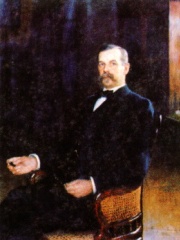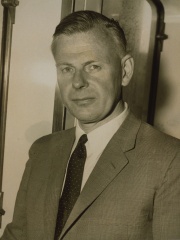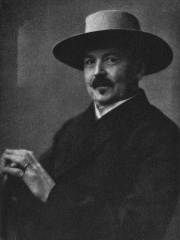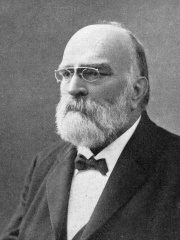






The Most Famous
ASTRONOMERS from Sweden
This page contains a list of the greatest Swedish Astronomers. The pantheon dataset contains 644 Astronomers, 8 of which were born in Sweden. This makes Sweden the birth place of the 16th most number of Astronomers behind Belgium, and Türkiye.
Top 8
The following people are considered by Pantheon to be the most legendary Swedish Astronomers of all time. This list of famous Swedish Astronomers is sorted by HPI (Historical Popularity Index), a metric that aggregates information on a biography's online popularity.

1. Tycho Brahe (1546 - 1601)
With an HPI of 83.46, Tycho Brahe is the most famous Swedish Astronomer. His biography has been translated into 105 different languages on wikipedia.
Tycho Brahe ( TY-koh BRAH-(h)ee, - BRAH(-hə); Danish: [ˈtsʰykʰo ˈpʁɑːə] ; born Tyge Ottesen Brahe, Danish: [ˈtsʰyːjə ˈʌtəsn̩ ˈpʁɑːə]; 14 December 1546 – 24 October 1601), generally called Tycho for short, was a Danish astronomer of the Renaissance, known for his comprehensive and unprecedentedly accurate astronomical observations. He was known during his lifetime as an astronomer, astrologer, and alchemist. He was the last major astronomer before the invention of the telescope and has been described as the greatest pre-telescopic astronomer. In 1572, Tycho noticed a completely new star that was brighter than any star or planet. Astonished by the existence of a star that ought not to have been there, he devoted himself to the creation of ever more accurate instruments of measurement over the next fifteen years (1576–1591). King Frederick II granted Tycho an estate on the island of Hven and the money to build Uraniborg, the first large observatory in Christian Europe. He later worked underground at Stjerneborg, where he realised that his instruments in Uraniborg were not sufficiently steady. His unprecedented research program both turned astronomy into the first modern science and also helped launch the Scientific Revolution. An heir to several noble families, Tycho was well educated. He worked to combine what he saw as the geometrical benefits of Copernican heliocentrism with the philosophical benefits of the Ptolemaic system, and devised the Tychonic system, his own version of a model of the Universe, with the Sun orbiting the Earth, and the planets as orbiting the Sun. In De nova stella (1573), he refuted the Aristotelian belief in an unchanging celestial realm. His measurements indicated that "new stars", stellae novae, now called supernovae, moved beyond the Moon, and he was able to show that comets were not atmospheric phenomena, as was previously thought. In 1597, Tycho was forced by the new king, Christian IV, to leave Denmark. He was invited to Prague, where he became the official imperial astronomer, and built an observatory at Benátky nad Jizerou. Before his death in 1601, he was assisted for a year by Johannes Kepler, who went on to use Tycho's data to develop his own three laws of planetary motion.

2. Anders Celsius (1701 - 1744)
With an HPI of 83.19, Anders Celsius is the 2nd most famous Swedish Astronomer. His biography has been translated into 93 different languages.
Anders Celsius (Swedish: [ˈânːdɛʂ ˈsɛ̌lːsɪɵs]; 27 November 1701 – 25 April 1744) was a Swedish astronomer, physicist and mathematician. He was professor of astronomy at Uppsala University from 1730 to 1744, but traveled from 1732 to 1735 visiting notable observatories in Germany, Italy and France. He founded the Uppsala Astronomical Observatory in 1741, and in 1742 proposed (an inverted form of) the centigrade temperature scale, which was later renamed Celsius in his honour.

3. Oskar Backlund (1846 - 1916)
With an HPI of 66.14, Oskar Backlund is the 3rd most famous Swedish Astronomer. His biography has been translated into 26 different languages.
Johan Oskar Backlund (28 April 1846 – 29 August 1916) was a Swedish-Russian astronomer. His name is sometimes given as Jöns Oskar Backlund, however even contemporary Swedish sources give "Johan". In Russia, where he spent his entire career, he is known as Oskar Andreevich Baklund (Russian: Оскар Андреевич Баклунд). Russian sources sometimes give his dates of birth and death as 16 April 1846 and 16 August 1916, since Russia still used the Julian calendar at the time.

4. Bengt Strömgren (1908 - 1987)
With an HPI of 62.94, Bengt Strömgren is the 4th most famous Swedish Astronomer. His biography has been translated into 25 different languages.
Bengt Georg Daniel Strömgren (21 January 1908 – 4 July 1987) was a Danish astronomer and astrophysicist.

5. Bertil Lindblad (1895 - 1965)
With an HPI of 61.84, Bertil Lindblad is the 5th most famous Swedish Astronomer. His biography has been translated into 24 different languages.
Bertil Lindblad (26 November 1895 – 25 June 1965) was a Swedish astronomer. After finishing his secondary education at Örebro högre allmänna läroverk, Lindblad matriculated at Uppsala University in 1914. He received his filosofie magister degree in 1917, his filosofie licentiat degree in 1918 and completed his doctorate and became a docent at the university in 1920. From 1927 he was professor and astronomer of the Royal Swedish Academy of Sciences and head of the Stockholm Observatory. In the latter capacity he was responsible for the observatory's move from the old building in the centre of Stockholm to a newly built facility in Saltsjöbaden Observatory, which was opened in 1931. Lindblad studied the theory of the rotation of galaxies. By making careful observations of the apparent motions of stars, he was able to study the rotation of the Milky Way. He deduced that the rate of rotation of the stars in the outer part of the galaxy, where the Sun is located, decreased with distance from the galactic core. This deduction was soon confirmed by Jan Oort in 1927. A certain class of resonances in rotating stellar or gaseous disks are named Lindblad resonances, after Bertil Lindblad. His son, Per Olof Lindblad, also became an astronomer.

6. Carl Charlier (1862 - 1934)
With an HPI of 61.53, Carl Charlier is the 6th most famous Swedish Astronomer. His biography has been translated into 22 different languages.
Carl Vilhelm Ludwig Charlier (1 April 1862 – 4 November 1934) was a Swedish astronomer. His parents were Emmerich Emanuel and Aurora Kristina (née Hollstein) Charlier.

7. Nils Christoffer Dunér (1839 - 1914)
With an HPI of 59.50, Nils Christoffer Dunér is the 7th most famous Swedish Astronomer. His biography has been translated into 18 different languages.
Nils Christoffer Dunér (Billeberga, Malmöhus län 21 May 1839 – Stockholm 10 November 1914) was a Swedish astronomer. His parents were Nils Dunér and Petronella (née Schlyter). Dunér received his doctorate from Lund University in 1862, was observer at the observatory there from 1864 and Professor of Astronomy at Uppsala University from 1888. He was awarded the Prix Lalande in 1887 and the Rumford Medal in 1892. The crater Dunér on the Moon is named after him. At Svalbard, Dunérfjellet on Svenskøya, Dunérbukta in Sabine Land, and Kapp Dunér, the western point of Bjørnøya, are named after him.

8. Claes-Ingvar Lagerkvist (b. 1944)
With an HPI of 55.13, Claes-Ingvar Lagerkvist is the 8th most famous Swedish Astronomer. His biography has been translated into 21 different languages.
Claes-Ingvar Lagerkvist (born 1944) is a Swedish astronomer at the Uppsala Astronomical Observatory. He is known for his work on the shapes and spin properties of minor planets. He has discovered three comets, P/1996 R2, C/1996 R3 and 308P/Lagerkvist–Carsenty. He has also discovered a number of asteroids, including the Trojan asteroid (37732) 1996 TY68. Asteroid 2875 Lagerkvist, discovered February 11, 1983 by Edward L. G. Bowell of the Lowell Observatory Near-Earth-Object Search (LONEOS), was named in his honour.
People
Pantheon has 8 people classified as Swedish astronomers born between 1546 and 1944. Of these 8, 1 (12.50%) of them are still alive today. The most famous living Swedish astronomers include Claes-Ingvar Lagerkvist. The most famous deceased Swedish astronomers include Tycho Brahe, Anders Celsius, and Oskar Backlund.
Living Swedish Astronomers
Go to all RankingsDeceased Swedish Astronomers
Go to all RankingsTycho Brahe
1546 - 1601
HPI: 83.46
Anders Celsius
1701 - 1744
HPI: 83.19
Oskar Backlund
1846 - 1916
HPI: 66.14
Bengt Strömgren
1908 - 1987
HPI: 62.94
Bertil Lindblad
1895 - 1965
HPI: 61.84
Carl Charlier
1862 - 1934
HPI: 61.53
Nils Christoffer Dunér
1839 - 1914
HPI: 59.50
Overlapping Lives
Which Astronomers were alive at the same time? This visualization shows the lifespans of the 5 most globally memorable Astronomers since 1700.

